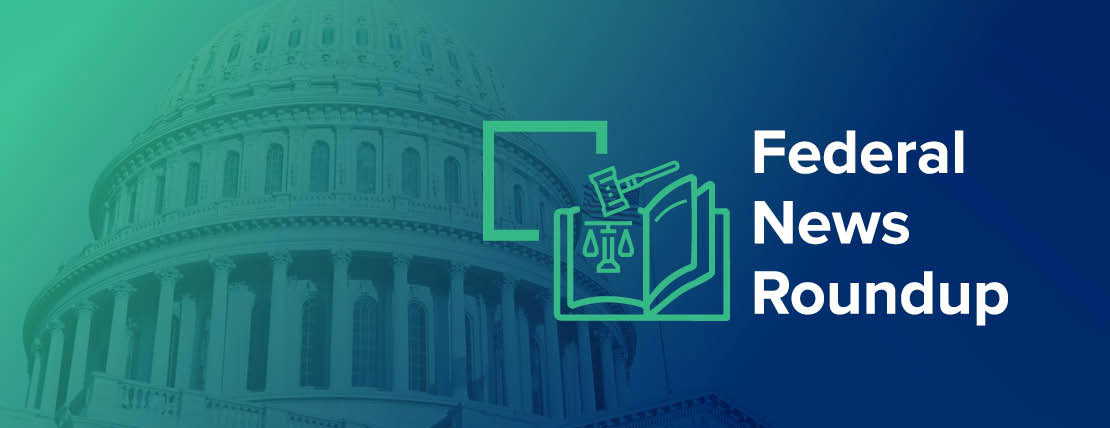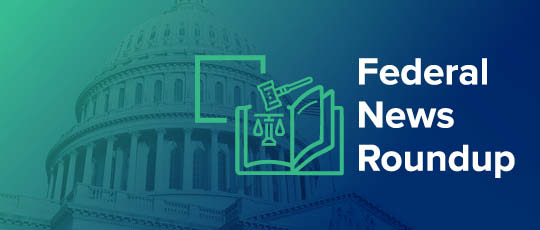- IRS Releases 2026 Dollar Limits for HSAs, HDHPs, HRAs
- DOL Will No Longer Enforce 2024 Independent Contractor Rule
- Trump Nominates Florida Attorney to Fill EEOC Role
- Judge Blocks Executive Order that Targets Collective Bargaining
IRS Releases 2026 Dollar Limits for HSAs, HDHPs, HRAs
The U.S. Internal Revenue Service (IRS) on May 1 released Revenue Procedure 2025-19, an advisory document that outlined the 2026 inflation-adjusted limits for health savings accounts (HSAs) and high-deductible health plans (HDHPs) that many employers offer in tandem to their employees.
Here’s what is changing, effective Jan. 1, 2026:
- HSAs: The annual contribution limit for an individual with self-only HDHP coverage is $4,400 (up from $4,300 in 2025). The annual limit for an individual with family HDHP coverage is $8,750 (up from $8,550). The catch-up limit for workers aged 55 and older is $1,000 (unchanged from this year).
- HDHPs: For self-only coverage, the minimum deductible amount is $1,700 (up from $1,650 in 2025) and the maximum annual out-of-pocket cost limit is $8,500 (up from $8,300). For family coverage, the minimum deductible is $3,400 (up from $3,300) and the maximum out-of pocket limit is $17,000 (up from $16,600).
In addition, the IRS increased the maximum employer contribution amount toward an excepted benefit health reimbursement arrangement (HRA) to $2,200 (up from $2,150 in 2025).
DOL Will No Longer Enforce 2024 Independent Contractor Rule
The U.S. Department of Labor (DOL) issued Field Assistance Bulletin No. 2025-1 on May 1, a guidance document that confirms it will no longer enforce an independent contractor rule issued in 2024 under the Joe Biden administration.
The 2024 rule provided an updated definition of “independent contractor” under the Fair Labor Standards Act (FLSA) and set forth a six-factor test to classify workers as employees or independent contractors. While intended to protect workers from being denied essential benefits, the rule faced backlash and numerous lawsuits from employers and industry groups that argued that the changes would financially harm their businesses.
According to the bulletin, the DOL’s Wage and Hour Division (WHD) “will no longer apply the 2024 rule’s analysis when determining employee versus independent contractor status in FLSA investigations. WHD will enforce the FLSA in accordance with Fact Sheet #13 (July 2008), and as further informed by Opinion Letter FLSA 2019-6 with respect to any matters for which no payment has been made, directly to individuals or to DOL, for back wages and/or civil money penalties as of May 1, 2025.”
The DOL stated it is currently reviewing and developing a revised standard for determining employee versus independent contractor status.
To that end, the bulletin pointed to Supreme Court precedent in outlining some of the characteristics of an “employment relationship under the Fair Labor Standards Act.” It stated, “The U.S. Supreme Court has on a number of occasions indicated that there is no single rule or test for determining whether an individual is an independent contractor or an employee for purposes of the FLSA. The court has held that it is the total activity or situation which controls. Among the factors which the Court has considered significant are:
- The extent to which the services rendered are an integral part of the principal’s business.
- The permanency of the relationship.
- The amount of the alleged contractor’s investment in facilities and equipment.
- The nature and degree of control by the principal.
- The alleged contractor’s opportunities for profit and loss.
- The amount of initiative, judgment or foresight in open-market competition with others required for the success of the claimed independent contractor.
- The degree of independent business organization and operation.”
Trump Nominates Florida Attorney to Fill EEOC Role
President Donald Trump has reportedly nominated Brittany Panuccio, an assistant U.S. attorney in Florida, to fill one of the three open seats on the five-person U.S. Equal Employment Opportunity Commission (EEOC).
The agency currently has just two commissioners — acting chair Andrea R. Lucas and commissioner Kalpana Kotagal — following Trump’s firing of Jocelyn Samuels and Charlotte A. Burrows on Jan. 27.
With this status, the agency does not have a working quorum and cannot make any official decisions until at least one additional member is installed through presidential appointment and Senate confirmation.
The EEOC enforces federal laws that prohibit employment discrimination in numerous areas (e.g., hiring, firing, promotions, harassment, training, wages, benefits).
Judge Blocks Executive Order that Targets Collective Bargaining
A federal judge recently blocked President Trump from ending collective bargaining with unions representing federal workers. Trump had outlined his plans to change established labor-management relations programs in a March 27 executive order and related fact sheet. Workforce groups have argued the executive order would effectively ban workers from joining federal unions.
In a case before the U.S. District Court for the District of Columbia, Judge Paul L. Friedman ruled in favor of the National Treasury Employees Union (NTEU), which represents tens of thousands of federal workers across the government.
NTEU president Doreen Greenwald called the ruling “a victory for federal employees, their union rights and the American people they serve.”
“The collective bargaining rights of federal employees will remain intact and the administration’s unlawful agenda to silence the voices of federal employees and dismantle unions is blocked,” she said in a press statement.
Liz Shuler, the president of the American Federation of Labor and Congress of Industrial Organizations (AFL-CIO), stated in a press release, “This ruling to restore federal workers’ collective bargaining rights and reinstate their existing contracts — even if temporarily while the case continues in court — is an important first step. But this fight isn’t over,”
Federal unions have been a major obstacle in Trump’s effort to slash the size of the federal work force and reshape the government.
Editor’s Note: Additional Content
For more information and resources related to this article, see the pages below, which offer quick access to all WorldatWork content on these topics:







